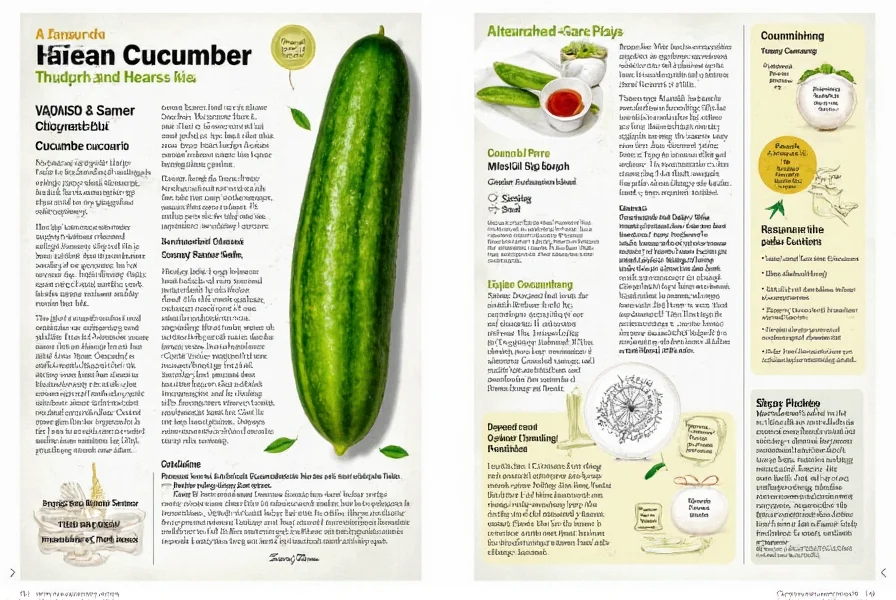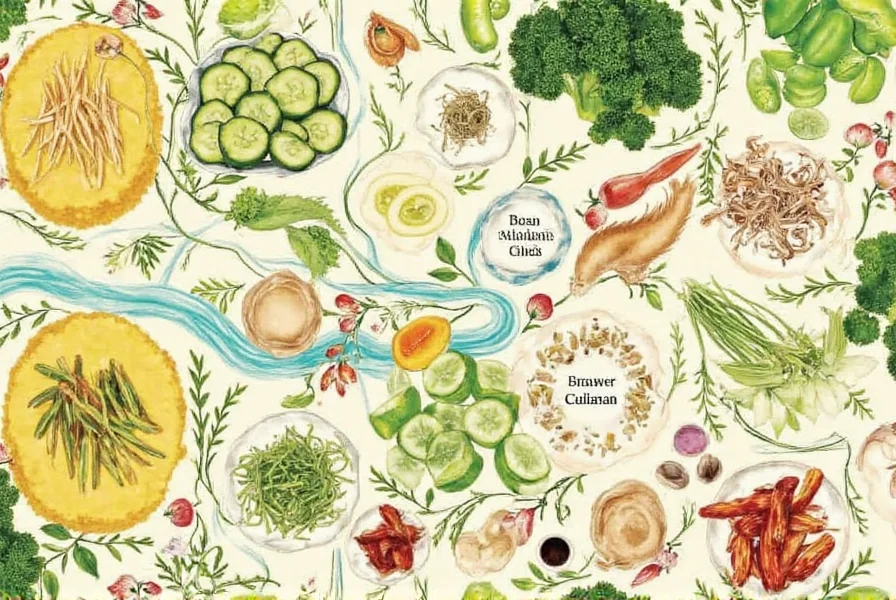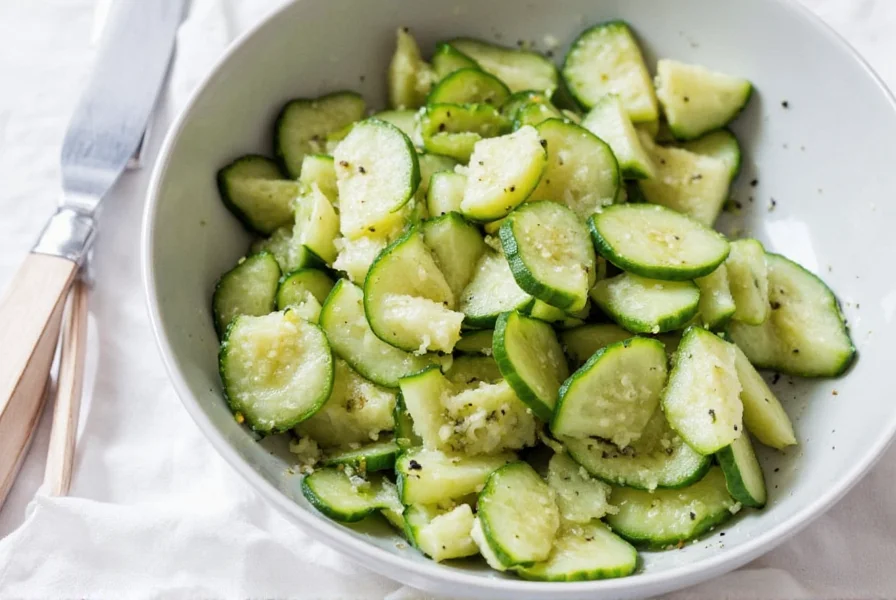| Feature | Regular Cucumber | Korean Cucumber |
|---|---|---|
| Flavor | Mild, neutral | Tangy, slightly spicy |
| Texture | Crunchy, watery | Crisp, firmer |
| Usage | Raw, in salads | Pickled, fermented, in kimchi |
| Spice Level | Low | Medium to high |
What is Korean Cucumber?
Korean cucumber is a specific variety of cucumber commonly used in Korean cuisine. Unlike regular cucumbers, it has a thinner skin, fewer seeds, and a slightly bitter taste that pairs well with spicy and fermented flavors. It is often used to make dishes like oi sobaegi (stuffed cucumber kimchi) or ganjang geotjeori (a soy-based cucumber kimchi), but the cucumber itself is not the dish name.

Why Korean Cucumber Stands Out
Korean cucumber offers unique advantages for culinary use:
- Distinct Flavor Profile: Its natural bitterness complements Korean spices like gochujang and soy sauce, creating complex tangy and savory notes.
- Texture Benefits: The crisp, firm texture holds up well during fermentation and pickling without becoming soggy.
- Nutritional Value: High water content (95%) provides hydration, while the edible skin adds dietary fiber and nutrients.
These qualities make it ideal for authentic Korean dishes where texture and flavor balance are crucial.

Culinary Uses of Korean Cucumber
1. Kimchi Variations
While traditional kimchi uses napa cabbage, Korean cucumber is perfect for lighter, quicker kimchi recipes. For example, oi sobaegi (stuffed cucumber kimchi) involves hollowing cucumbers and filling them with spicy paste, resulting in a refreshing, crunchy side dish.
2. Refreshing Salads
Sliced Korean cucumbers in salads with sesame oil, rice vinegar, and chili flakes create a crisp, tangy accompaniment. Its firm texture prevents sogginess, unlike regular cucumbers.
3. Fermented Pickles
Quick pickles made with Korean cucumbers soak in a brine of salt, garlic, and gochujang for 2-3 hours. The result is a tangy, slightly spicy snack that pairs perfectly with rice or grilled meats.
4. Dipping Sauces
Blended Korean cucumber with soy sauce, ginger, and chili flakes forms a smooth, acidic dip for seafood or dumplings. Its natural moisture enhances sauce consistency without dilution.

Buying Guide: How to Choose the Best Korean Cucumber
1. Freshness Indicators
Look for firm, smooth cucumbers with bright green skin and no soft spots. Avoid yellowing or wrinkled areas, which indicate age.
2. Size and Shape
Korean cucumbers are typically 4-6 inches long, cylindrical, and uniform in thickness. Smaller sizes (under 6 inches) often have better texture for pickling.
3. Origin and Quality
For fresh cucumbers, choose those labeled "Korean variety" or "Korean cucumber." For pre-made products like kimchi, check for clear ingredient lists and reputable Korean brands.
4. Taste Test
Sample a small piece; authentic Korean cucumbers should have a mild bitterness balanced by freshness, not overwhelming sourness or saltiness.
Practical Tips for Using Korean Cucumber
- Prep Correctly: For kimchi or pickles, slice cucumbers lengthwise and gently salt for 10 minutes to draw out excess moisture before seasoning.
- Balance Flavors: Start with 2 tablespoons gochujang, 1 tablespoon rice vinegar, 1 teaspoon sugar, and 1 tablespoon soy sauce per medium cucumber. Adjust to taste after 30 minutes of marinating.
- Storage Best Practices: Store unwashed cucumbers in a perforated plastic bag in the refrigerator crisper drawer for up to 7 days. Prepared dishes like kimchi last 2-3 weeks in airtight containers.
- Pairing Recommendations: Korean cucumber complements soy sauce, sesame oil, garlic, and ginger. Avoid over-seasoning; its natural flavor should shine through.
Frequently Asked Questions About Korean Cucumber
What makes Korean cucumber different from regular cucumber?
Korean cucumbers are smaller (4-6 inches), thinner-skinned, and have fewer seeds than regular cucumbers. They possess a natural mild bitterness that enhances spicy Korean dishes, while regular cucumbers are milder and best for raw salads. Korean cucumbers also hold texture better during fermentation.
How can I reduce the bitterness in Korean cucumber?
Lightly salt sliced cucumbers and let them sit for 10-15 minutes before rinsing. This draws out excess moisture and some bitterness without removing the characteristic flavor. For traditional Korean dishes, the subtle bitterness actually balances spices, so complete removal isn't recommended.
What's the best way to store Korean cucumber for maximum freshness?
Keep unwashed cucumbers in the refrigerator crisper drawer inside a perforated plastic bag or wrapped in a damp paper towel. This maintains humidity while allowing airflow. Properly stored, they stay fresh for 5-7 days. Prepared dishes like kimchi should be stored in airtight containers and will keep for 2-3 weeks.
Can I substitute regular cucumber for Korean cucumber in recipes?
English or Persian cucumbers work best as substitutes. Peel them, remove seeds, and salt for 10 minutes to reduce water content. Increase gochujang or garlic slightly to compensate for the milder flavor. Note that texture may be softer during fermentation.
How do I achieve the perfect balance of flavors in Korean cucumber dishes?
Focus on balancing spicy (gochujang), sour (rice vinegar), sweet (sugar), salty (soy sauce), and umami (fermented elements). Start with 2 tbsp gochujang, 1 tbsp vinegar, 1 tsp sugar, and 1 tbsp soy sauce per medium cucumber. Let marinate 30 minutes before serving to allow flavors to meld. Add toasted sesame seeds for nutty richness.
What are the health benefits of Korean cucumber compared to regular cucumber?
Korean cucumbers provide similar hydration (95% water content) but offer more dietary fiber due to their edible skin. When fermented, they develop probiotic benefits. Adding garlic, ginger, and chili peppers in Korean preparations boosts antioxidants and anti-inflammatory compounds. Be mindful of sodium in pickled versions if monitoring salt intake.
Conclusion
Korean cucumber is a versatile ingredient that brings authentic Korean flavors to home cooking. Its unique texture and natural bitterness make it ideal for pickling, kimchi, and spicy dishes where regular cucumbers fall short.
By selecting fresh cucumbers, using proper preparation techniques, and balancing flavors carefully, you can create delicious Korean-inspired dishes that highlight this special vegetable. Whether you're new to Korean cuisine or a seasoned cook, Korean cucumber adds a distinctive touch to any meal.











 浙公网安备
33010002000092号
浙公网安备
33010002000092号 浙B2-20120091-4
浙B2-20120091-4